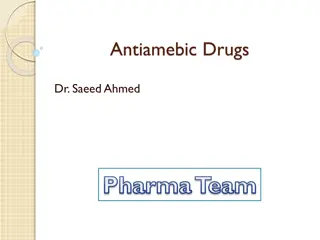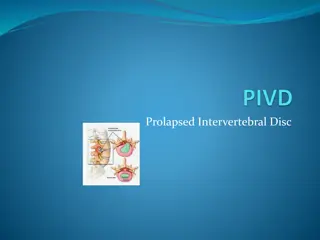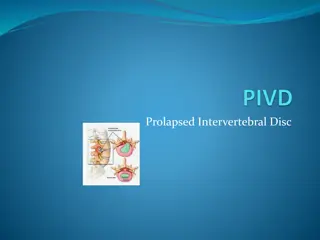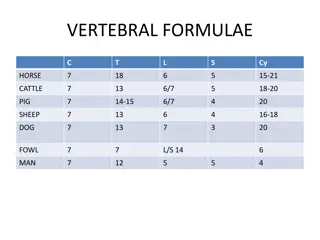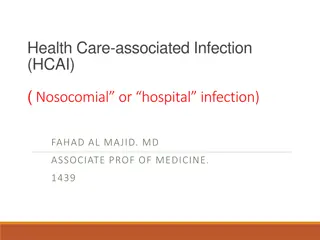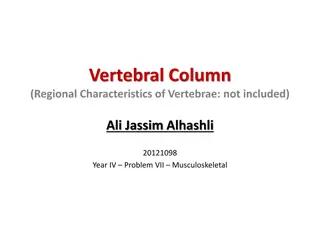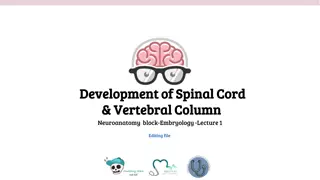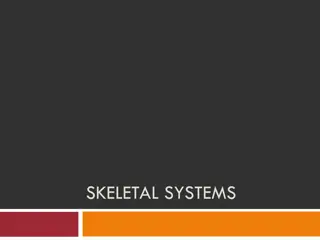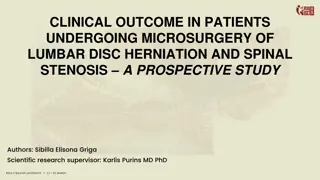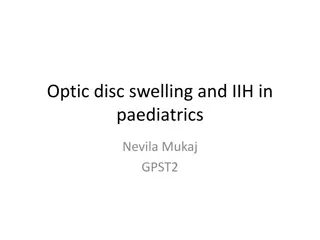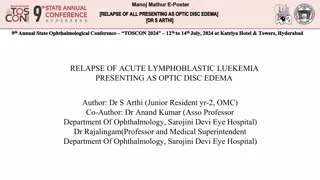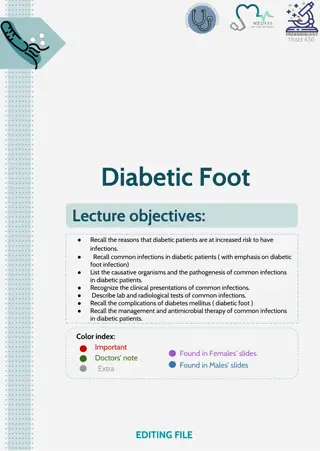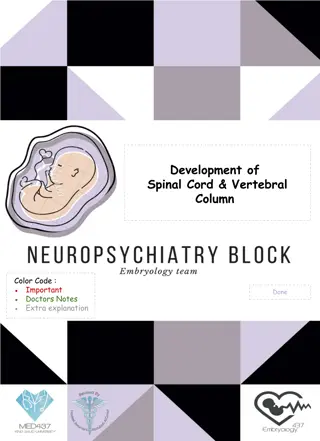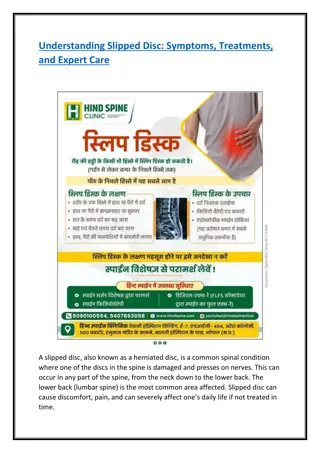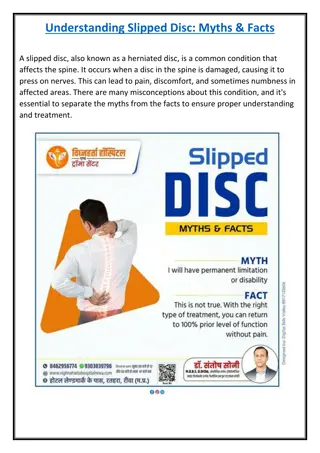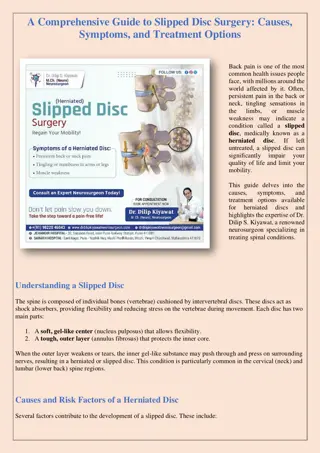Management of Adult Vertebral Disc Infections: SPILF Guidelines Update
Infections of the vertebral discs in adults, or IDV, require prompt diagnosis and treatment based on the latest SPILF guidelines. Key aspects include the importance of disc biopsies if blood cultures are negative, assessing spinal stability by a spine specialist, and utilizing MRI for comprehensive
1 views • 25 slides
Understanding Anaemia and Infections in Relation to Health
Anaemia can result from various causes such as blood loss, increased destruction of red blood cells, and impaired production, often linked to infections and chronic diseases. Parasites, bacteria, and viruses play a role in the progression of anaemia, affecting the body's ability to produce and utili
3 views • 10 slides
Understanding Nontuberculous Mycobacteria Infections in Cystic Fibrosis
Nontuberculous mycobacteria (NTM) infections present a significant challenge in individuals with cystic fibrosis (CF). These infections are caused by over 200 species of atypical mycobacteria found in various environments. The CF-ID Clinic plays a crucial role in managing patients with multi-drug re
2 views • 25 slides
Anaerobic Bacterial Infections: Overview and Clinical Implications
Anaerobic bacterial infections are caused by bacteria that do not require oxygen for growth, posing challenges in diagnosis and treatment. This article delves into the types of anaerobic bacteria, their role in human infections, and common clinical presentations such as abscess formation. Gram-negat
2 views • 24 slides
Understanding the Blood Supply of the Brain
The brain receives its blood supply from four major arteries - two vertebral arteries and two internal carotid arteries. The vertebral arteries branch into the basilar artery, which gives rise to various important branches. The internal carotid arteries supply the anterior and middle cerebral arteri
1 views • 30 slides
Understanding Fungi Diversity and Infections in Microbiology
Explore the world of fungi and fungal infections in this foundation block of microbiology. Learn about medically important yeasts, mold fungi, major fungal diseases, antifungal agents, and infection acquisition methods. Dive into hypersensitivity reactions, mycotoxicoses, and various types of fungal
1 views • 19 slides
Understanding Virus-Cell Interactions and Infections
Viral infections exhibit diverse cellular tropism based on receptor interactions, impacting cell function through modulation and potential host defense responses. Infections can lead to various outcomes, from cell death to persistent or latent states, with nuanced effects on cellular behavior. Diffe
0 views • 8 slides
Understanding Antiamebic Drugs: A Guide to Managing Protozoal Infections
Protozoal infections, such as amebiasis, are a significant concern globally. In underdeveloped regions and beyond, these infections pose challenges due to inadequate sanitation and hygiene practices. Antiamebic drugs are essential for treating conditions like amebiasis, caused by Entamoeba histolyti
0 views • 40 slides
Understanding Prolapsed Intervertebral Disc (PIVD)
The intervertebral disc, a crucial component of the spine, can be affected by prolapse, leading to various stages of PIVD. The condition involves the nucleus pulposus bulging out due to tears in the annulus fibrosis. The stages of PIVD include bulging disc, protrusion, extrusion, and sequestrization
0 views • 36 slides
Understanding Prolapsed Intervertebral Disc (PIVD) and its Stages
The article explores the anatomy of intervertebral discs, definition of spinal disc prolapse, stages of PIVD (bulging disc, protrusion, extrusion, sequestration), and provides detailed insights into each stage with corresponding images. Readers can gain a comprehensive understanding of PIVD and its
0 views • 36 slides
Understanding Anthelmintics: Drug Therapy for Parasitic Worm Infections in Veterinary Medicine
Anthelmintics are essential drugs to combat parasitic worm infections in animals. They work either by killing (vermicide) or expelling (vermifuge) the worms, reducing worm burdens and controlling infections. This comprehensive overview covers different aspects of anthelmintics, including their prope
2 views • 34 slides
Understanding the Treatment of Respiratory Tract Infections: Antibiotics and Management
This lecture covers the classification of respiratory tract infections and the antibiotics commonly used to treat them. It highlights the types of infections caused by viruses and bacteria, along with their respective treatments. The mechanism of action and pharmacokinetics of antibiotics, such as p
0 views • 7 slides
Understanding Degenerative Spine Disease and Disc Degeneration
Degenerative spine disease is a prevalent condition affecting millions, leading to substantial healthcare costs. The anatomy and physiology of spine degeneration involve the three-joint complex theory. Pathologically, disc degeneration impacts the nucleus pulposus and annulus fibrosis, contributing
0 views • 37 slides
Insights into Vertebral Fractures and Bone Health
Delve into the world of vertebral fractures and bone health with Dr. Frazer Anderson. Explore the impact of fractures, the importance of understanding the spine, and how to treat and prevent fractures effectively. Uncover fascinating bone factoids and learn about bone turnover and the factors that c
0 views • 24 slides
Comparative Anatomy of Mammals: Vertebral and Skeletal Structures
Explore the variations in vertebral formulae, rib pairs, rib shaft characteristics, scapula morphology, humerus features, ulna differences, and metacarpals/digits among horse, cattle, pig, sheep, dog, and fowl. Detailed images and descriptions offer insights into the distinct skeletal structures of
0 views • 9 slides
Understanding Health Care-associated Infections (HCAI) in Hospital Settings
Health care-associated infections (HCAI), also known as nosocomial or hospital infections, are infections that occur in patients during their hospital stay or after discharge. These infections can result from various sources, including colonization by microorganisms and exposure to contaminated envi
0 views • 48 slides
Overview of Eye, Ear, Nose, and Throat Infections by Nenad Pandak
In this comprehensive guide by Nenad Pandak, various aspects of eye, ear, nose, and throat infections are discussed. The content covers infections such as conjunctivitis, keratitis, pharyngitis, otitis media, and sinusitis. It also delves into causes, clinical presentations, and diagnosis of these i
0 views • 68 slides
Understanding the Vertebral Column and Abnormal Curvatures
The vertebral column, extending from the cranium to the coccyx, plays vital roles in protecting the spinal cord, providing support, and facilitating movement. It consists of 33 vertebrae arranged in 5 regions, each with specific functions and characteristics. The column's curvatures, including cervi
0 views • 12 slides
Embryology of Spinal Cord and Vertebral Column Development
Explore the fascinating embryological journey of the spinal cord and vertebral column development, covering topics such as neural tube formation, layers of the spinal cord, subdivisions of mantle and marginal zones, chondrification, ossification stages, spina bifida types, and more. Dive into the st
1 views • 15 slides
Understanding the Anatomy of the Skeletal System
Explore the two major sections of the skeletal system: the Axial Skeleton, which provides protection to vital organs, and the Appendicular Skeleton, enabling movement. Discover variations in bone structure across species, from horses to dogs, and delve into the bones of the Axial Skeleton, including
0 views • 29 slides
Understanding Respiratory Tract Infections: Causes and Prevention
Respiratory tract infections are commonly caused by viruses, bacteria, rickettsia, and fungi, leading to various health issues. These infections can be transmitted through droplets, droplet nuclei, and dust, emphasizing the importance of maintaining respiratory health through specific and non-specif
0 views • 34 slides
Understanding Viral Infections of the Respiratory System
Respiratory viral infections are common and primarily caused by viruses, leading to morbidity and time off work. They can range from mild upper respiratory tract infections to severe lower respiratory tract infections like pneumonia. Various viruses like influenza, parainfluenza, respiratory syncyti
0 views • 23 slides
Enhancing Information Sharing: DISC and PISA Benefits
DISC (Dorset Information Sharing Charter) and PISA (Personal Information Sharing Agreement) facilitate improved information sharing among healthcare organizations in Dorset. DISC establishes robust principles for managing data flow and promoting best practices in information governance, while PISA t
0 views • 8 slides
Clinical Outcomes in Microsurgery for Lumbar Disc Herniation: Prospective Study
This prospective study examined the clinical outcomes in patients undergoing microsurgery for lumbar disc herniation and spinal stenosis. The study evaluated the effectiveness of surgical intervention using the Oswestry Disability Index (ODI) and Numeric Rating Scale (NRS) questionnaires preoperativ
0 views • 13 slides
Optic Disc Swelling and IIH in Paediatrics: A Case Study of Papilloedema in a 12-year-old Female
This case study presents a 12-year-old female who was referred for papilloedema with symptoms of headaches, intermittent vomiting, and blurred vision that worsens upon getting up. She had no history of trauma, diplopia, or significant medical conditions. Examination revealed optic disc swelling, hyp
0 views • 44 slides
DiSC Dorset Information Sharing Charter Overview
The DiSC Dorset Information Sharing Charter, initiated by the Better Together programme, aims to improve information sharing for patients, residents, and service users in Dorset. It ensures a collaborative approach with an overarching governance and quality assurance structure. With over 100 members
0 views • 7 slides
Relapse of Acute Lymphoblastic Leukemia presenting as Optic Disc Edema at TOSCON 2024
At the 9th Annual State Ophthalmological Conference (TOSCON) in 2024, Dr. S. Arthi presented a case of a 21-year-old male with a history of Acute Lymphoblastic Leukemia (ALL) who experienced a relapse presenting as optic disc edema. Despite chemotherapy and being under remission, the patient develop
0 views • 6 slides
Overview of Tax Incentive Strategy for U.S. Exporters by Edward K. Dwyer, CPA
This presentation by Edward K. Dwyer, a renowned CPA, delves into the tax incentive strategies for U.S. exporters, focusing on the Interest Charge Domestic International Sales Corporation (IC-DISC). It covers the historical background, recent legislative impacts, IC-DISC requirements, intercompany p
0 views • 31 slides
Efficient Algorithms for Finding the Smallest Enclosing Disc
Explore algorithms for finding the smallest enclosing disc for a given set of objects, optimizing central placement, and ensuring minimal distance from objects. The process involves identifying critical steps, computations for passing through points, and analysis highlighting linear running times. D
0 views • 14 slides
The Evolution of Flying Disc Sports: A Global Perspective
Explore the fascinating history and development of flying disc sports, from the early days of Frisbee to the formation of the World Flying Disc Federation. Learn about key milestones, organizations, and the global impact of disc sports. Discover how these sports have evolved and gained recognition w
0 views • 50 slides
Understanding the DISC Personality Profiles
The DISC model, developed by William Moulton Marston, categorizes individuals into four behavioral styles based on whether they are people-oriented or task-oriented, as well as reserved or active. The Dominant (D) style is assertive and decisive, Influential (I) style is charismatic and motivating,
0 views • 9 slides
Understanding Disc Prolapse and Degenerative Changes in the Spine
Intervertebral discs are crucial gel-like cushions between vertebrae that absorb shock and allow spinal flexibility. Disc prolapse, wear and tear, and spondylosis are common issues, with types like focal and broad-based herniation explained. The axial localization of herniated discs and imaging meth
0 views • 33 slides
Understanding Common Infections in Nursing Home Residents
Explore the causes, types, and impact of infections in nursing home residents while learning how to prevent and control infections. Discover common infections, factors contributing to infections, and resident rights in infection control practices.
0 views • 23 slides
Understanding Diabetic Foot Infections and Associated Risks
Diabetic patients are prone to infections, significantly impacting morbidity and mortality rates. Increased infection risk is due to both host-related and organism-related factors. Common infections in diabetic patients include skin and soft tissue infections, diabetic foot infections, respiratory t
0 views • 14 slides
Preventing Catheter-Associated Urinary Tract Infections
This presentation covers the prevention of catheter-associated urinary tract infections (CAUTIs) in healthcare settings. It highlights the significance of urinary tract infections, risk factors, preventive measures, and common microbiology involved. Key topics include the importance of urine collect
0 views • 34 slides
Development of Spinal Cord and Vertebral Column - Doctors' Notes
The development of the spinal cord from the neural tube, layers of the spinal cord, subdivisions of mantle and marginal zones, meningeal layers, vertebral column development, chondrification, ossification stages, spina bifida types, and positional changes of the spinal cord are crucial aspects cover
0 views • 10 slides
Understanding Slipped Disc Hind Spine Clinic
If you're looking to understand and treat a slipped disc in Bhopal, Hind Spine Clinic, led by Dr. Raghvendra Raghuvanshi, offers specialized care and guidance. A slipped disc, also known as a herniated disc, can cause significant back pain and discom
2 views • 4 slides
Understanding Slipped Disc Vighnharta Hospital
A slipped disc, also known as a herniated disc, is a common spine problem that can cause significant discomfort and impact daily activities. There are many myths surrounding this condition, leading to confusion and unnecessary worry. At Vighnaharta H
3 views • 5 slides
Slipped Disc Surgery in pune - Dr. Dilip Kiyawat
This is an informational flyer about Dr. Dilip S. Kiyawat, a neurosurgeon specializing in herniated (slipped) disc surgery. It highlights symptoms like persistent back pain, tingling, and muscle weakness. It encourages consultation for regaining mobi
1 views • 4 slides
Managing Catheter-Related Bloodstream Infections in Vascular Access
Reduce and prevent catheter-related bloodstream infections in vascular access by addressing extraluminal infection sources and implementing strategies outlined in national drivers such as the NHS Long Term Plan and the Antimicrobial Resistance Action Plan. Recognize the importance of tackling antimi
0 views • 25 slides







